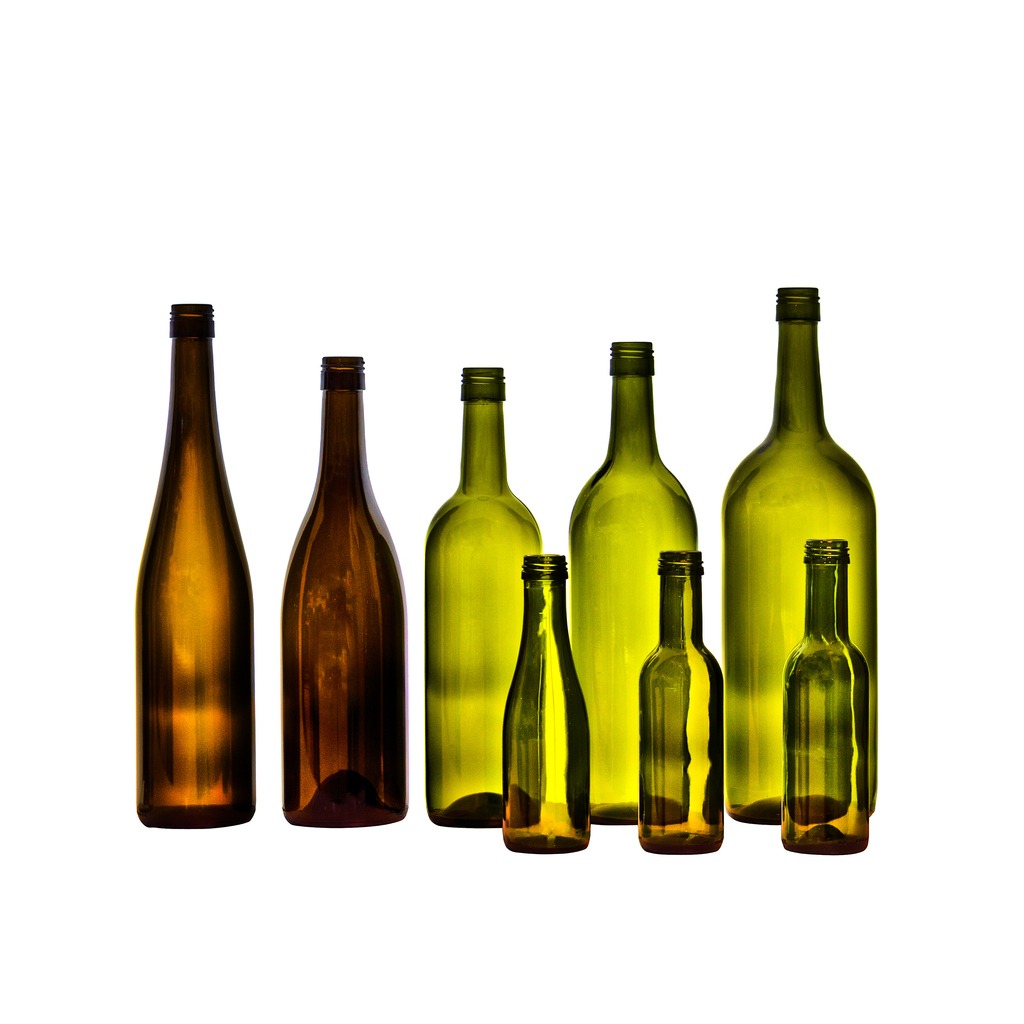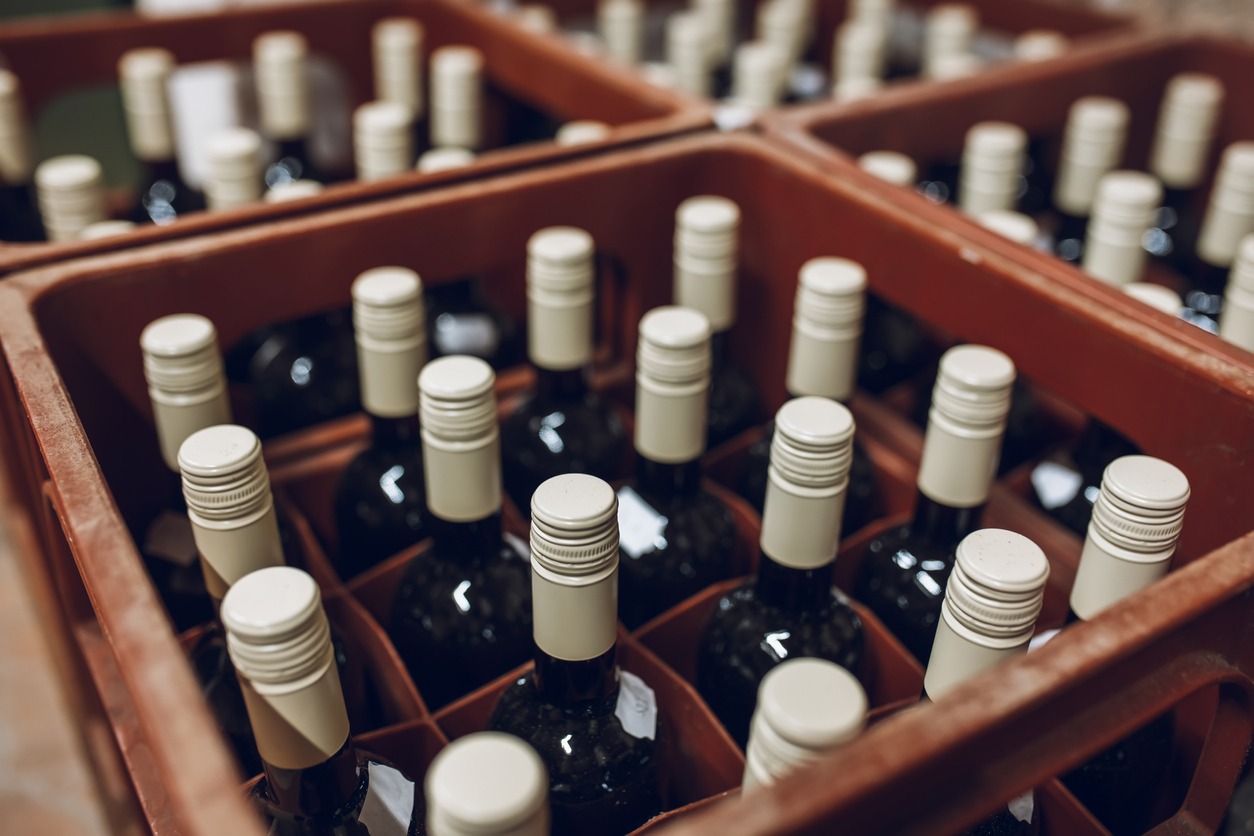The world of wine is not just about varietals and vintages; it’s also about the presentation, and a significant aspect of this presentation is the bottle size. From the familiar standard bottle to the grandeur of the larger formats, each size has its own name, history, and occasion where it shines the brightest. In this blog post, we’ll explore the diverse range of wine bottle sizes, including some of the lesser-known but equally impressive larger formats.
The Different Size Wine Bottles
Here is an overview of each of the more common modern day standardized wine bottles – they go from very small to gargantuan!
1. The Split and Half – 375ml – 2.5 Glasses: At half the size of the standard bottle, these formats are perfect for single servings or for those wishing to enjoy wine without opening a full bottle. These smaller bottles are half the size of a standard bottle. “Split” is often used for sparkling wines, and “half” is more commonly used for still wines. The name likely comes from the idea of them being a “split” or “half” portion of the standard size.
2. The Standard – 750ml – 5 Glasses: The 750ml bottle, the most commonly encountered size, is considered ideal for the aging of wine. It’s believed that this size correlates with the average yield of a vine and the ideal volume for oxidation. The standard bottle doesn’t have a unique name like the larger sizes.
3. The Magnum – 1.5L – 10 Glasses: Holding two standard bottles, the magnum is revered for its aging potential. The larger volume of wine in relation to the air in the bottle allows for a slower, more graceful aging process. “Magnum” means “large” in Latin. It’s double the size of a standard bottle and has become synonymous with celebrations and grandeur.
4. The Jeroboam – 3L/4.5L – 20 Glasses: In the world of still wines, a Jeroboam holds 3 liters (four standard bottles). For Champagne and sparkling wines, it holds 4.5 liters (six standard bottles), perfect for celebrations and gatherings. Named after Jeroboam I, the first King of the Northern Kingdom of Israel, who ruled for 22 years. The name was likely chosen to symbolize strength and longevity.
5. The Rehoboam – 4.5L – 30 Glasses: This size is specific to Champagne and sparkling wines, holding the equivalent of six standard bottles. This size is named after Rehoboam, the son of Solomon and grandson of David, who became the King of Judah. The choice of a biblical king’s name follows the tradition of using regal and historical figures for larger bottle sizes.
6. The Methuselah – 6L – 40 Glasses: A Methuselah contains eight standard bottles’ worth of wine and is often used for Champagne, where its large format contributes to a complex and refined flavor profile. Named after Methuselah, the oldest person mentioned in the Bible. The name implies age and longevity, fitting for a bottle often used for aging wine.
7. The Salmanazar – 9L – 60 Glasses: This grand bottle holds twelve standard bottles and is a popular choice for large events and celebrations. Named after Shalmaneser, a king of Assyria. The name continues the trend of using ancient royal names for large wine bottles.
8. The Balthazar – 12L – 80 Glasses: With a capacity for sixteen standard bottles, the Balthazar is a rare find, used for both still and sparkling wines. Named after Balthazar, one of the Three Wise Men who visited Jesus after his birth. This name is in keeping with the tradition of using biblical references.
9. The Nebuchadnezzar – 15L – 100 Glasses: Holding twenty standard bottles, the Nebuchadnezzar is an impressive size, often the centerpiece at major events and auctions. Named after Nebuchadnezzar II, the longest-reigning and most powerful monarch of the Neo-Babylonian empire. This name symbolizes grandeur and power.
10. The Melchior – 18L – 120 Glasses: One of the largest commercially available sizes, the Melchior holds twenty-four standard bottles and is reserved for the most special occasions. Also named after one of the Three Wise Men, reflecting the tradition of using names from biblical history.
11. The Sovereign – 26L – 173 Glasses: The Sovereign, holding approximately twenty-six standard bottles or 26 liters of wine, is a relatively recent addition to the large format family. It’s particularly popular for Champagne and is a showstopper at major celebrations. The name signifies supreme power and authority, suitable for one of the largest standard wine bottles.
12. The Primat or Goliath – 27L – 180 Glasses: Also known as the Goliath, the Primat bottle holds 27 liters, equivalent to thirty-six standard bottles. This colossal size is rare and often custom-made for special editions and events. “Primat” indicates something of the first rank or importance, while “Goliath” refers to the biblical giant, symbolizing the massive size of the bottle.
13. The Melchizedek – 30L – 200 Glasses: The Melchizedek, or sometimes referred to as the Midas, is the titan of wine bottles, holding an astonishing thirty liters, which is equivalent to forty standard bottles. Due to its size and the complexity of its production, it’s extremely rare and a true spectacle in the world of wine. Named after Melchizedek, a king and priest from the Bible. The name is apt for the largest standard bottle size, indicating a regal and almost mythical status.
Since we’ve discussed the different sizes of wine bottles, have you ever wondered how many grapes are needed in order to produce one bottle? If you are curious to find out, you may read our article, How Many Grapes Does It Take to Make a Single Bottle of Wine?
Final Thoughts
The variety of wine bottle sizes is a testament to the celebratory and social nature of wine drinking. From the intimate setting suited to a Split or Half, to the grandeur of a Melchizedek at a major event, each size has its place and purpose. Understanding these different formats not only enriches our knowledge of wine but also adds an extra layer of intrigue and festivity to our wine experiences. So next time you encounter one of these sizes, take a moment to appreciate the craftsmanship and tradition it represents, and the joy it’s intended to bring.

